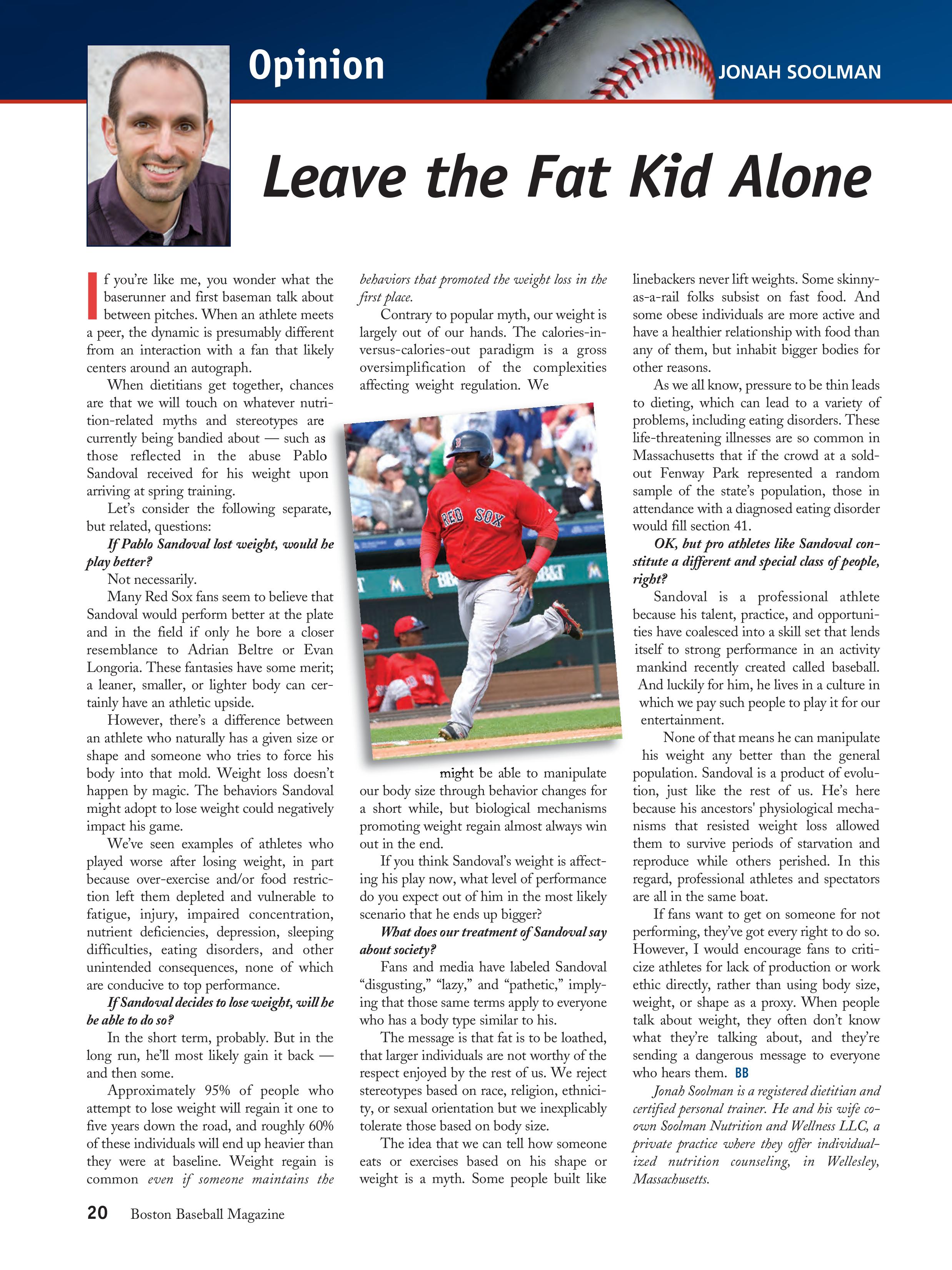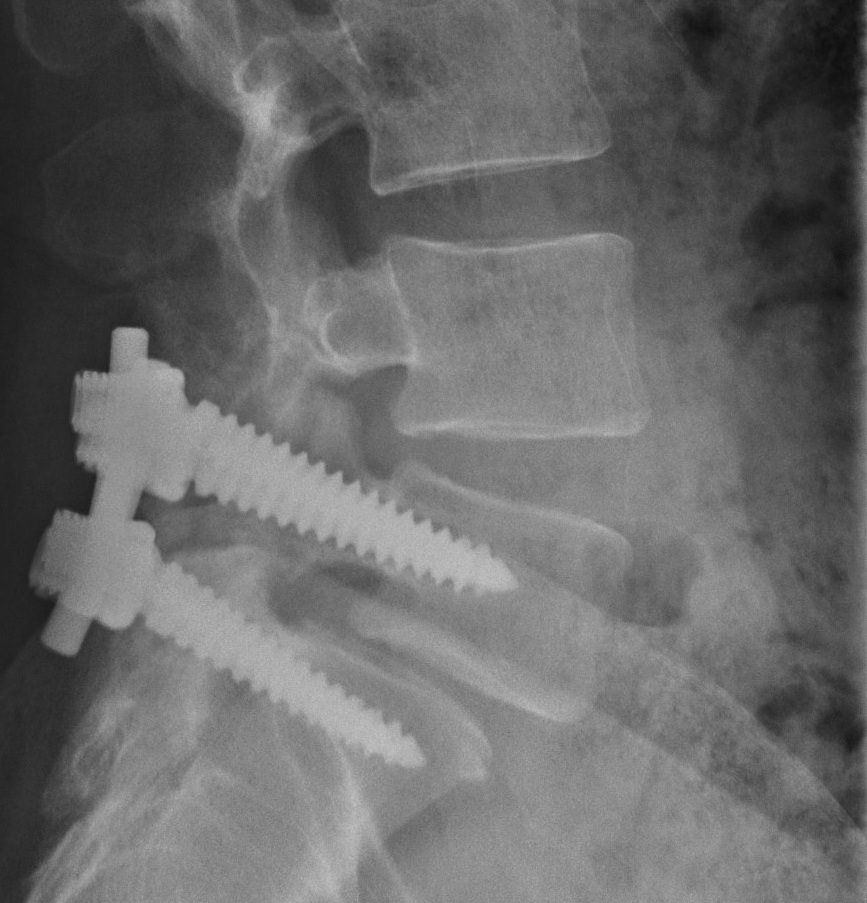Note: A slightly edited version of this piece appears in the April 2016 issue of Boston Baseball Magazine.
If you are like me, you wonder what the baserunner and first baseman talk about between pitches. When an athlete meets a peer, the dynamic is presumably different from an interaction with a fan that likely centers around adulation and an autograph.
When dietitians get together, chances are that at some point, we will touch on whatever nutrition-related myths and stereotypes are currently damaging our society, such as those reflected in the widespread negative reaction Pablo Sandoval received for his weight upon arriving at spring training.
Consider the following separate, but related, questions:
If Sandoval loses weight, will he play better?
Maybe, but not necessarily.
We look at Sandoval’s physique and dream about the offensive and defensive punishments he could inflict upon the league if only he bore a closer resemblance to Adrian Beltre or Evan Longoria. These fantasies have some merit, as a leaner, smaller, or lighter body can certainly have athletic upsides sometimes.
However, a significant difference exists between an athlete who naturally has a given size or shape versus someone who tries to force his body into that mold. Since weight loss does not happen by magic, we have to consider whether the behaviors Sandoval adopts in pursuit of weight loss would improve his game.
The outcome could go either way. We have seen in a variety of sports, including baseball, examples of athletes who played worse after losing weight, in part because over-exercise and/or food restriction left them depleted and vulnerable to fatigue, injury, impaired concentration, nutrient deficiencies, depression, sleeping difficulties, eating disorders, muscle atrophy, and other unintended consequences, none of which are conducive to top performance.
If Sandoval decides to lose weight, will he be able to do so?
In the short term, probably, but in the long run, he will most likely gain it back plus more.
Approximately 95% of people who attempt to lose weight will regain it one to five years down the road, and roughly 60% of these individuals will end up heavier than they were at baseline. Weight regain is common even if someone maintains the behaviors that promoted the weight loss in the first place.
Contrary to popular myth, our weight is largely out of our hands. The calories-in-versus-calories-out paradigm is a gross oversimplification of the complexities affecting weight regulation. While we might be able to manipulate our body size through behavior changes for a short while, biological mechanisms promoting weight regain almost always win out in the end.
If you subscribe to the theory that Sandoval’s weight is affecting his play, what level of performance do you expect out of him in the most likely scenario that he ends up bigger?
What does our treatment of Sandoval say about society?
Fans and media have labeled Sandoval “disgusting,” “lazy,” and “pathetic.” By the transitive property, these derogatory terms apply to everyone who has a body type similar to his.
The message is that fat is to be loathed, that larger individuals are not worthy of the respect enjoyed by the rest of us. We reject stereotypes based on race, religion, ethnicity, or sexual orientation while we inexplicably tolerate those based on body size that are no more accurate than the others, yet are just as abhorrent.
The idea that we can tell how someone eats or exercises based on his shape or weight is a myth. Some people built like linebackers never lift weights, some skinny-as-a-rail folks subsist on fast food, and some obese individuals are more active and have a healthier relationship with food than all of them but inhabit bigger bodies for other reasons.
Weight stigma oftentimes inspires people to sacrifice health for the pursuit of a size. Pressure to be thin leads to dieting, which is a predictor of a variety of problems, including eating disorders. These life-threatening illnesses are so common in Massachusetts that if the crowd at a sold-out Fenway Park represented a random sample of the state’s population, those in attendance with a diagnosed eating disorder would likely fill section 41.
Okay, but professional athletes like Sandoval constitute a different and special class of people, right?
Let’s take a step back and look at the bigger picture. Sandoval is a professional athlete because his talent, practice, and opportunities have coalesced into a skill set that lends itself to strong performance in an activity mankind recently created called baseball and he lives in a culture in which we pay such people to play it for our entertainment.
None of that means he has any more or less ability to manipulate his weight differently from the general population. Sandoval is a product of evolution just like the rest of us, and he has come into being because his ancestors’ physiological mechanisms that resisted weight loss allowed them to survive periods of starvation and reproduce while others perished. In this regard, professional athletes and spectators are all in the same boat.
Fans have every right to feel whatever emotions they may have about a player. If they want to get on someone for not performing, they can absolutely do that. However, I would encourage fans to criticize athletes for lack of production or work ethic directly rather than using body size, weight, or shape as a proxy, as the latter behavior is fueled much more by myths and stereotypes rather than science and sends a dangerous message to everyone who hears it.





